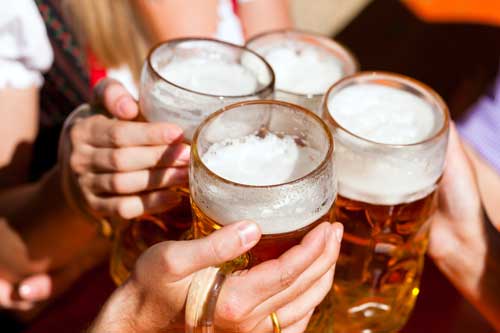 We all know it but don’t want to admit that The U.S. is known for its light watery mass produced beers. Thankfully over the last twenty years we went from one of the worst beer producing countries in the world to the country that produces more varieties of beer than anywhere else. But it seems that even with all of these delicious beers we can’t shake or heritage of the American light lager.
We all know it but don’t want to admit that The U.S. is known for its light watery mass produced beers. Thankfully over the last twenty years we went from one of the worst beer producing countries in the world to the country that produces more varieties of beer than anywhere else. But it seems that even with all of these delicious beers we can’t shake or heritage of the American light lager.
We need to clear a few things up. We didn’t always make our beers as week and tasteless as some of these light beers. The style to brew our beer actually came from pilsners. Pilsners are another light beer like a lager that doesn’t use the lagering process during fermentation, (or cold fermentation). Pilsners are easier to make because the low temperatures were hard to obtain back in the day because of the lack of refrigeration, you would need a perfect cave or similar for storage. Being Americans we had to be different.
In Germany the oldest food law in the world says that only three ingredients can be used to make beer. They are water, grains, and yeast. Well we don’t like other countries rules so we started using adjuncts or other ingredients to get fermentables for brewing. Things like corn and rice were introduced as a replacement for most of the grains. This resulted in a cheaper lighter version of the pilsner. Soon, refrigeration made the lagering (lager mean Storage in German) process even easier so we started lagering our corn and rice beer beers and the Amarican light lager was born.
What makes this different than other lagers (if not already obvious)? It’s easy, American beers use more adjuncts in there beer. A light lager can contain up to 40% adjuncts like corn and rice. Beers like Coors use more rice as adjuncts while other beers, like Budweiser, would use more corn. So there really is a difference! Go tell your friends and say that you knew all along you could tell the difference.
But what about your premium beer? They have to be made with all grain ingredients! Nope, The only difference between a premium beer and a light beer is 15% adjuncts. Premium beer comes in at “up to” 25% adjuncts in their beers. There really aren’t any mass produced beers in the united states, in the light lager category, that don’t use some form of adjunct to save money.
When prohibition hit it knocked out most of the breweries in the united states. Only the large companies that were able to make alternatives made it through these hard times. When prohibition ended only around 20 breweries were left and they mostly only made beers similar to the american light lager. The real beer boom in the US really didn’t start until home brewing was legalized in 1978 by Jimmy Carter. After this micro breweries started popping up all over the nation growing the industry ten times over. But the big brewing companies still were looking for ways to make a buck. Through clever expensive marketing and mass production lines, the American people are still fed a healthy diet of light beers (which I don’t mean to hate on, if you like it, then good for you!).
If you want to taste the difference between a beer that is full of adjuncts and a beer that in most cases uses none. Try a Munich Hells, or Dortmunder Export, style beer. These beers are brewed using 100% grains and are similar in style to the light American lagers and are known for the mineral full water used to brew them. You will notice more flavor and body that you can’t obtain from adjuncts like corn and rice.
I hope this was helpful to your beer drinking future. Jamie Out… ')}

